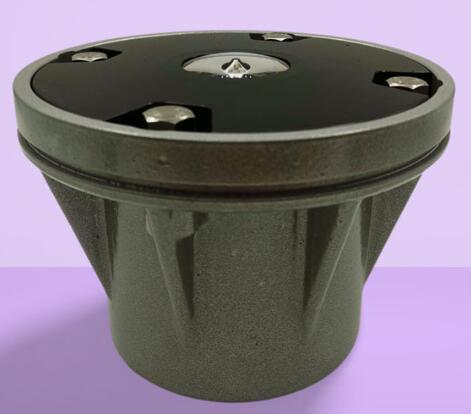Heliport Lighting System: The Lifeline of Safe Helicopter Movements
In the complex matrix of heliport operations, the heliport lighting system is the unsung hero that ensures the seamless and secure arrival and departure of helicopters. It is not just a collection of lights; rather, it is a sophisticated network designed to meet the stringent demands of aviation safety.
Components of the Heliport Lighting System
Approach Lighting
Approach lighting is the first line of visual guidance for incoming helicopters. It typically consists of a series of lights arranged in a specific pattern. For example, a V - shaped configuration of lights can be used to indicate the correct approach path. These lights are often spaced at precise intervals to provide a continuous visual cue for the pilot. They may also have variable intensity settings, which can be adjusted according to weather conditions. In foggy weather, for instance, the intensity can be increased to enhance visibility.

Perimeter Lighting
The perimeter lighting of a heliport clearly defines the boundaries of the landing area. This is crucial for pilots to accurately position the helicopter during landing and take - off. These lights are usually placed at regular intervals around the edge of the helipad. They can be either fixed - intensity lights or ones with adjustable brightness, depending on the heliport's specific requirements. Additionally, perimeter lights are often designed to be highly visible, even in the presence of surrounding ambient light.
| heliport lighting system |
| heliport lighting systems |
Touchdown and Take - Off Area (TLOF) Lighting
The TLOF lighting system is focused on illuminating the exact area where the helicopter makes contact with the ground during landing and takes off from. Green lights are commonly used in this area to signal that it is safe for the helicopter to land or take off. The lights are arranged in a way that provides a clear visual indication of the TLOF's location and dimensions. This helps pilots to align the helicopter properly and make a smooth transition.
Technological Advancements in the Lighting System
Smart Lighting Controls
Modern heliport lighting systems are equipped with smart controls. These systems can be automated to turn on and off based on the time of day or the ambient light conditions. For example, sensors can detect when the sun sets and automatically activate the lights. Some smart controls also allow for remote monitoring and adjustment. Operators can monitor the status of the lights from a control room and make changes to the intensity or flash patterns as needed.
Integration with Navigation Systems
There is an increasing trend towards integrating the heliport lighting system with navigation systems. This integration enables the lighting system to communicate directly with the helicopter's on - board navigation equipment. For instance, the lighting system can send real - time information about the heliport's location, the condition of the landing area, and any potential hazards to the helicopter's navigation system. This provides pilots with more accurate and up - to - date information, enhancing safety during flight.
Maintenance and Regulatory Compliance
Regular maintenance of the heliport lighting system is essential. This includes routine checks of the lights, cleaning of the lenses, and inspection of the electrical components. Any malfunctioning lights should be replaced promptly to ensure the system's reliability.
Heliport lighting systems must also comply with strict regulations set by aviation authorities. These regulations cover aspects such as the color, intensity, and positioning of the lights. For example, the International Civil Aviation Organization (ICAO) has established specific standards for heliport lighting to ensure consistency and safety across different regions.
In conclusion, the heliport lighting system is a critical component of heliport infrastructure. Its ability to provide clear visual guidance, its technological advancements, and its compliance with regulations all contribute to the safe operation of helicopters. As the aviation industry continues to evolve, the heliport lighting system will undoubtedly play an even more significant role in ensuring the safety and efficiency of helicopter operations.
